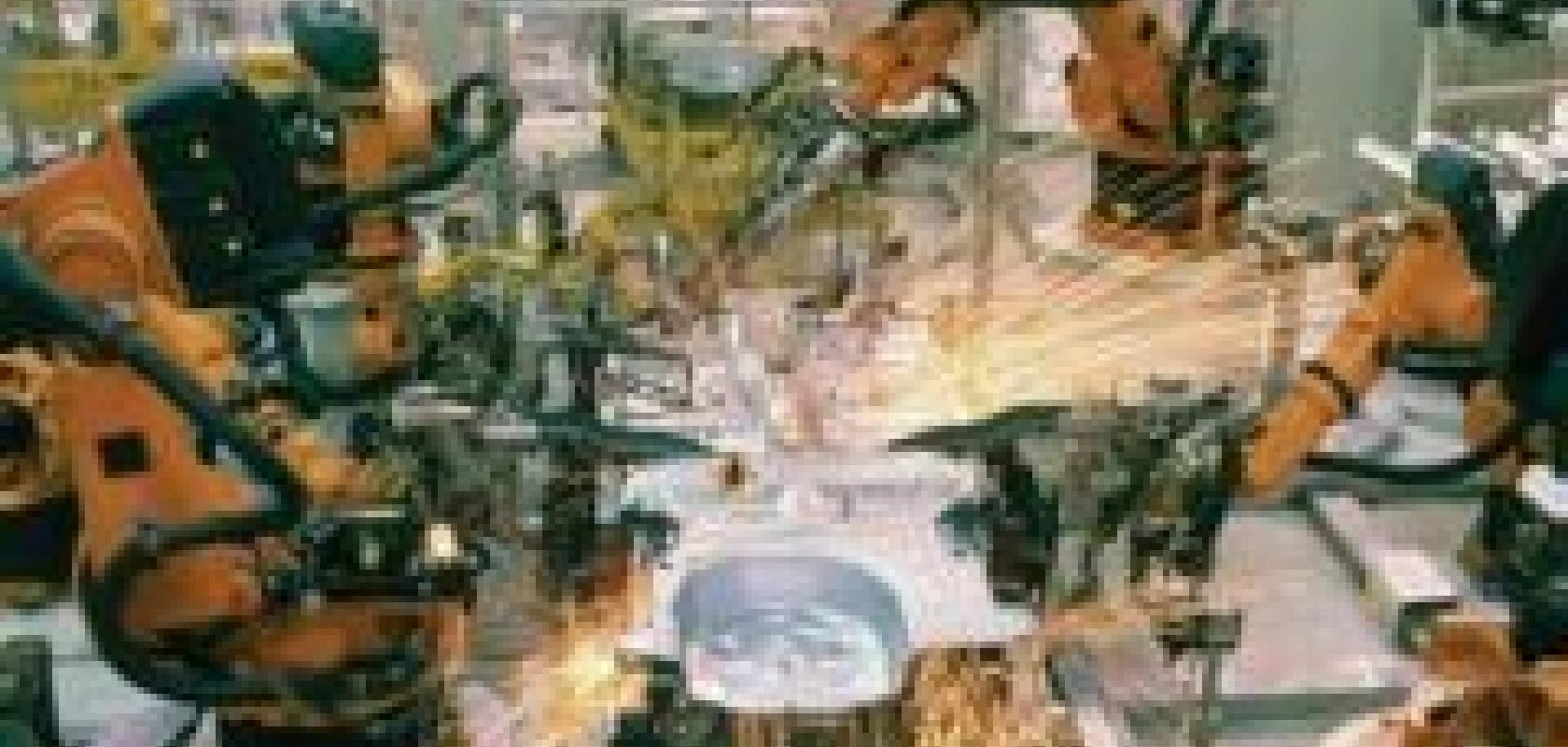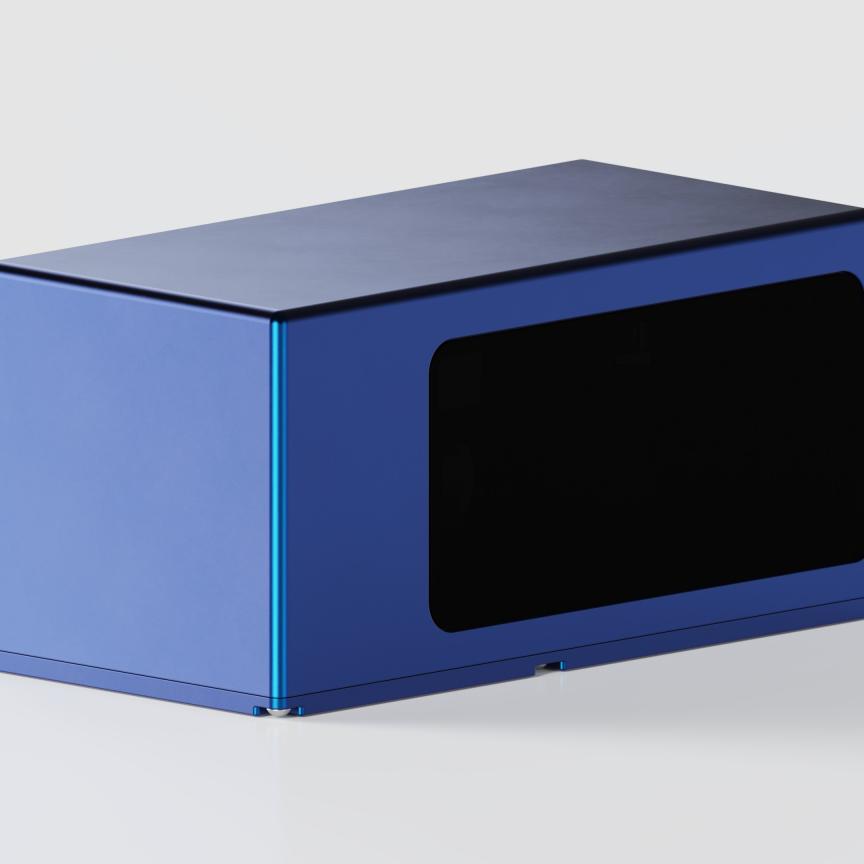Lasers have become synonymous with car production. Robots and lasers have replaced the mass production lines of 30 years ago. But just because lasers are now widely adopted throughout car manufacturing, that does not mean that their role has become settled. Lasers are expanding into new areas of manufacturing within the auto industry. They are no longer restricted to sheet metal processing, but now handle many different types of metal, and other materials such as plastics as well.
They are also increasingly used where manufacturers want to implement innovative production techniques. Rapid manufacturing is one application that is increasingly linked with the adoption of laser systems. Another is mass customisation. Lean production, kanban, flexible manufacturing and JIT all started in the automotive industry, before emerging to revolutionise general manufacturing. Such processes are not identical with adoption of laser systems, but increasingly in the automotive industry, they are linked.
Finally, car manufacturing always used to be about size and scale. The mass production lines of three decades ago achieved economies of scale that could not be rivalled by smaller vendors using the same techniques: it was a formidable barrier to market entry. That is why Toyota developed lean production – it was the only way they could break into marketplaces dominated by ‘the big three’ Detroit giants. Today, lasers are helping rebalance the playing field, allowing more efficient production at lower volumes than would have been possible in the past, enabling smaller suppliers to compete effectively with larger companies, and opening the way for rapid manufacturing and mass customisation.
Lean and agile – squaring the circle
Greater production efficiency, reduced costs and lean inventory were the main reasons why German auto parts supplier Eberspaecher opted for laser welding instead of tungsten inert gas welding when it built a new catalytic converter plant. Eberspaecher is a leading manufacturer of both catalytic converters and complete exhaust systems. The company supplies many of the major auto manufacturers, including Chrysler and Mercedes-Benz.
The company wanted a welding system that would enable continuous operation and rapid production. It had to be very high performance, require minimal set-up, and be completely integrated into the company’s CIM and CAD systems. The goal was a production system that could switch between different catalytic products rapidly and without disruption to unit output. It also needed to be able to support lean production and JIT replenishment.
Eberspaecher chose a laser welding approach over conventional technologies, selecting a Twinmaster laser system from Weil Engineering of Muelheim, Germany. The Twinmaster provides both roll forming and laser welding within a single system. It also controls subsidiary production processes such as blank feeding and post-welding tube expansion. The system incorporates a Trumpf TLF 3200 3.2 kW laser, and is capable of fabricating 500 parts per hour, with a welding speed of up to five metres per minute.
The Twinmaster system is controlled by a Siemens Sinumatic 840D for CNC functions, and a Siemens Simatic OP170 operator panel.
The system is loaded with standard short blanks that are welded together to make a complete converter. The system holds around an hour's supply of blanks from a destacker. Once one destacker is emptied, a second is automatically repositioned, allowing the first to be reloaded. Depending on the catalytic converter being fabricated, multiple blanks are loaded and welded. After welding, the tubes are then transferred to a weld annealing system.
Although using lasers within the Twinmaster system, rather than inert gas welding, increased the capital cost of the equipment, the laser is capable of far higher throughput and provides much higher return on investment than conventional welding technology. Finished part quality has been improved by using laser welding instead of conventional alternatives, and overall catalytic converter system production has been increased by 20 per cent by the new system. Eberspaecher has also been able to capture far more production and data quality from the new system, improving their statistical process control systems.
As a result of the laser welding system, Eberspaecher has been able to implement a continuous operation rapid production system that also has all the cost and throughput advantages of lean production. The company can respond rapidly to customer driven design changes, and load balance production without suffering any lost output. The company has been able to cut the number of inventory parts it stores, without affecting product customisation or manufacturing flexibility.
Not just metal
Auto manufacturing is usually associated with metal processing. In the past, before robots and lasers took over the production line, it was often described as a metal bashing industry. But metal is not the only material to go into cars. The typical modern car also includes a lot of plastic. Some of this is just as safety critical as the metal chassis – for example, the air bags. Many parts are also of complex design. With so much plastic in today’s cars, manufacturers are just as keen to improve their plastic manufacturing processes as their metal processes.
Increasingly, car manufacturers are turning to lasers for plastics as well as metal. Among the touted advantages of plastic laser processing for car manufacturers is the ability to produce very precise, detailed designs that would be difficult if not impossible with conventional processes. Lasers also offer better integration to CAD and CIM systems, rapid set-up, mass customisation features, and lower running costs.
One company supplying plastic processing laser systems to the automotive industry is Jenoptik. Its Beam in Motion laser systems have been adopted by auto manufacturers for cutting sound proofing pads within the car, for vehicle dashboards and for interior trim. Laser cutting sound proofing pads results in better noise reduction as the laser cutting edge does not reduce the pad's overall effectiveness, unlike conventional plastic cutting technologies. The laser also seals the cut edge, eliminating fibres within the vehicle body.
Another leading supplier of laser plastic processing systems to the automotive industry is German firm Robot-Technology. The company integrates production line robot technology with lasers. Its FLACS system is based on either ABB or Kuka robot platforms, and lasers from suppliers such as Rofin-Sinar, Coherent and Trumpf.
One company using Robot-Technology systems is Mercedes-Benz, which uses two FLACS systems for drilling plastic holes into bumpers for attaching number plates on its CClass cars. The large number of different number plate designs around the world makes this a difficult process to standardise within a production line. Before the laser system, handheld power drills were used. Using a laser-based system speeds production, and is safer.
Another factor fuelling the uptake of lasers for plastics cutting in the automotive industry is the increasing adoption of natural fibre-based thermoplastics. Car manufacturers are adopting natural fibre-based plastics to improve their environmental credentials. However, cutting them with conventional tools can create a large amount of dust and fibre shreds. Using lasers eliminates this problem, and lasers are able to achieve a clean, exact trim, even on a composite fibrous material.
Lasers keep classic cars alive
Most auto manufacturers use laser technology to push forward the design of their products. They use lasers to make it simpler or more economic to produce the most advanced and sophisticated designs. But not Classic Reproductions of Ohio. It uses lasers to make sure that auto parts technology stays firmly in the 1950s, even if it does so using the most sophisticated production systems.

Even spare parts for classic cars are being produced using lasers.
The company specialises in producing exact replicas of parts for classic cars from the 1960s or 1950s. Their components are used by collectors to replace and repair damaged parts in cars first made more than 50 years ago. Each part must meet the exact technical specification of the original.
The company tries to be as close as possible to the original manufacturing processes employed by the giant auto makers of Detroit of 50 years ago, such as Ford, General Motors and Chrysler. But in the 1950s and 1960s, these manufacturers were turning out thousands of identical models in huge assembly plants. They achieved enormous economies of scale, often with the most inefficient technology. For Classic Reproductions, this posed a problem. They don’t have massive production lines with thousands of workers. That means that many of the old production techniques are highly inefficient for a small producer – one reason the giant US auto makers were able to dominate the market and keep smaller rivals out until the Japanese arrived in the 1970s with more efficient production methods.
For Classic Reproductions, trimming excess metal from stamped sheet metal posed a particular problem. On the high volume production lines that produced the original parts, this was done with a trim die in a progressive stamping press line. But the low production quantities being turned out by Classic Reproductions made the cost of using trim dies prohibitive for many components. The company used hand shearing instead for trimming many parts. This was economically viable, but had serious quality and productivity implications. Each stamping was marked for trimming with a template. Accurately trimming these large stamped parts by hand, with their compound curves and angles, proved very time consuming. As the shift progressed, workers would get tired, and the cutting edge of the shears would dull.
Instead, the company turned to a laser solution. The company purchased a 2.2kW CO2 Domino 360° twin axial laser system. The impact on productivity and cost has been immediate. Hand cutting stamped sheet metal parts typically takes around six minutes. The laser can trim the part in about 46 seconds. Production costs on sheet metal components trimmed by laser have fallen by more than 10 per cent. The savings on non sheet metal parts is even greater. The company also makes automotive suspension parts, such as frame rails and braces, which are manufactured from heavy gauge steel. Trimming of these parts was performed with a bandsaw or plasma torch. Using a laser saves up to 40 per cent in labour costs on these parts. The laser system has also eliminated the need to maintain expensive trim die punches. This has saved the company around 20 per cent in labour costs.
From rapid manufacturing the latest Formula One racing cars to ensuring that the cars of 50 years ago stay running – with exactly the same parts – lasers continue to be a force for innovation and change in the automotive industry. Their role is ever expanding, and they are frequently at the forefront of new developments in industry, whether lean production, agile manufacturing, mass customisation or rapid manufacturing.


